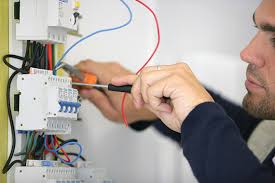If you are planning to change the house wiring or you have some electric work at home than the knowledge about the basic wires is very beneficial. Selecting the correct wire can make your project easier and stays consistent for a long time. A wire type can give you information about the circuit system installed in the house. However, nowadays the wiring installed in houses is normally based on the standard wiring system defined by the best level 2 electrician in Sydney. Different types of wires are used for indoor and outdoor wiring on the basis of the amount of current it carries.

Firstly we should clear-out the confusion between a cable and a wire. Most of the times the term is interchangeable without knowing their difference as wires are used as a conductor to conduct electricity; commonly known conductors of electricity are copper or aluminum whereas a cable is a wire on which a layer of insulation has been quoted for safety purposes.
Types of wires
There are various types of wires are used for installing a power pole replacement such as:
NM Cables:
These are non-metallic cables which are most used cables in modern homes. These cables have 2 or more wires inside which are protected with the coating of plastic; among those, there may 1 or 2 current carrying wire, 1 neutral and 1 ground wire. These wires are known as Romex which is the name of a famous brand of these wires. Now all the house wiring is done with the use of NM wires which are used in dry places and widely available in different sizes and amperage.
UF cables:
These cables are also a type of non-metallic cables which are used to install underground wiring chain; they have the ability to resist water. These wires are used outside the house and have a thick and separate coating of plastic on each wire if compared to the Nm wires.
THHN and THWN wires:
These are single wires which are used inside the conduit, a thin flexible plastic. These wires are used for the exposed area which did not hide the wires inside the wall. The abbreviation of the names explains their usage such as THHN; thermoplastic, highly heat resistant and nylon coated whereas THWN; thermoplastic, heat resistant, rated for wet area and nylon coated cables.
Low voltage wires:
These wires are used to pass current of low voltage like 50 volts or less. Low voltage wire is further divided into three types on the basis of the volts it handles, these wires are used to pass current to devices requires less current such as lamps, doorbells etc.
Others wires which are used in houses are phone and internet connection cables which are also of low voltage. All the wires installed in and out the house need proper handling to keep the power supply working smoothly. Level-II service providers are qualified to handle all electric work carefully and make it sure that the system will not cause any unexpected breaks.
